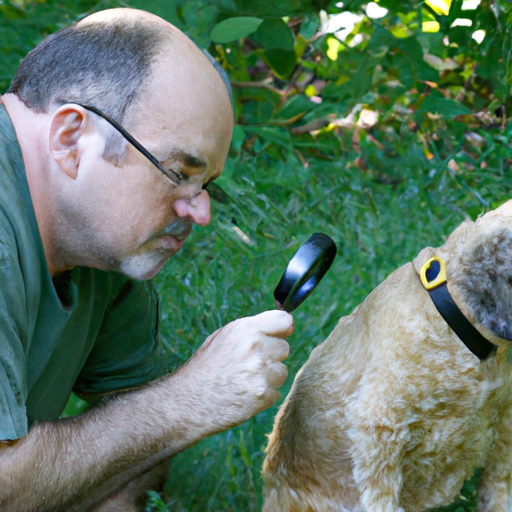As a caregiver, you inherently understand the importance of keeping your furry friends healthy and well. This article will focus on an important, yet often misunderstood topic – why dogs get ticks and what you can do about it.
Understanding Ticks and Their Attraction to Dogs
Ticks are small, parasitic arachnids that feed on the blood of mammals, including dogs. They are attracted to warmth, motion, and the carbon dioxide that dogs and other mammals exhale. Ticks are especially attracted to dogs because of their fur, which provides a safe environment for ticks to hide and breed.
Your dog’s behavior can also play a part in attracting ticks. Dogs that spend a lot of time outdoors, especially in wooded or grassy areas, are more likely to get ticks. The same goes for dogs that are frequently in contact with other animals that may have ticks.
The Risks Associated with Ticks
Ticks pose several risks to your dog’s health. The most well-known risk is Lyme disease, a serious condition that can cause joint pain, fatigue, and other symptoms. Other diseases transmitted by ticks include:
- Anaplasmosis
- Ehrlichiosis
- Rocky Mountain Spotted Fever
In addition to these diseases, ticks can also cause a condition called tick paralysis in dogs. This condition is caused by a toxin that some ticks secrete while feeding.
| Disease | Symptoms | Treatment |
|---|---|---|
| Lyme Disease | Joint pain, fatigue, fever, and other symptoms | Antibiotics |
| Anaplasmosis | Fever, joint pain, lethargy, and other symptoms | Antibiotics |
| Ehrlichiosis | Fever, weight loss, eye inflammation, and other symptoms | Antibiotics |
| Rocky Mountain Spotted Fever | Fever, muscle pain, vomiting, and other symptoms | Antibiotics |
How to Check Your Dog for Ticks
Regularly checking your dog for ticks is an important part of keeping them healthy. Here’s a simple process you can follow:
- Start by checking your dog’s face and ears.
- Move down to their neck and shoulders.
- Check their chest and front legs.
- Move to their back and sides.
- Finally, check their tail and hind legs.
Remember, ticks can be tiny and their bites are usually painless, so your dog may not show any signs of discomfort.
Preventing Ticks on Dogs
Preventing ticks is far better than dealing with them once they’ve latched onto your pet. Here are some steps you can take:
- Keep your dog’s environment clean and free of tall grasses where ticks can hide.
- Use tick preventatives, such as tick collars, sprays, or topical treatments.
- Regularly check your dog for ticks, especially after they’ve been outside.
- Consult with your vet about the best tick prevention strategies for your dog.
FAQ
Q: Can ticks infest my home?
A: Yes, ticks can infest your home if they are brought in by your dog or other pets. Regular cleaning and preventative measures can help keep ticks at bay.
Q: How can I safely remove a tick from my dog?
A: Use a pair of tweezers to grasp the tick as close to your dog’s skin as possible, then slowly pull upward. Avoid twisting or crushing the tick.
Q: Can my dog get ticks in the winter?
A: Yes, ticks can be active in the winter, especially during mild winters. It’s important to use tick preventatives year-round.
Q: Can ticks make my dog sick?
A: Yes, ticks can transmit diseases to your dog, which can cause a variety of symptoms and may require treatment. If your dog is showing signs of illness and you suspect ticks, consult your vet.



